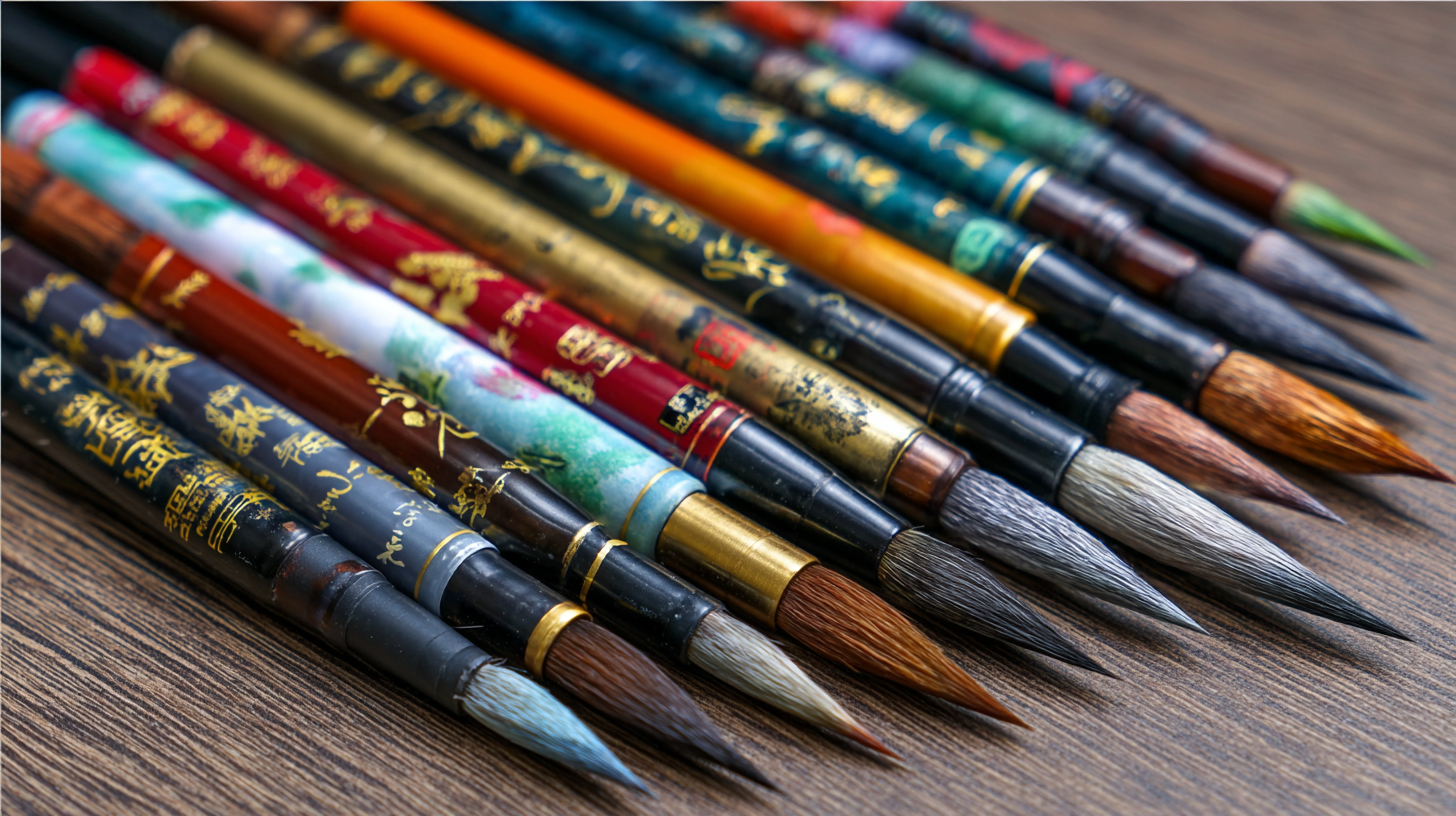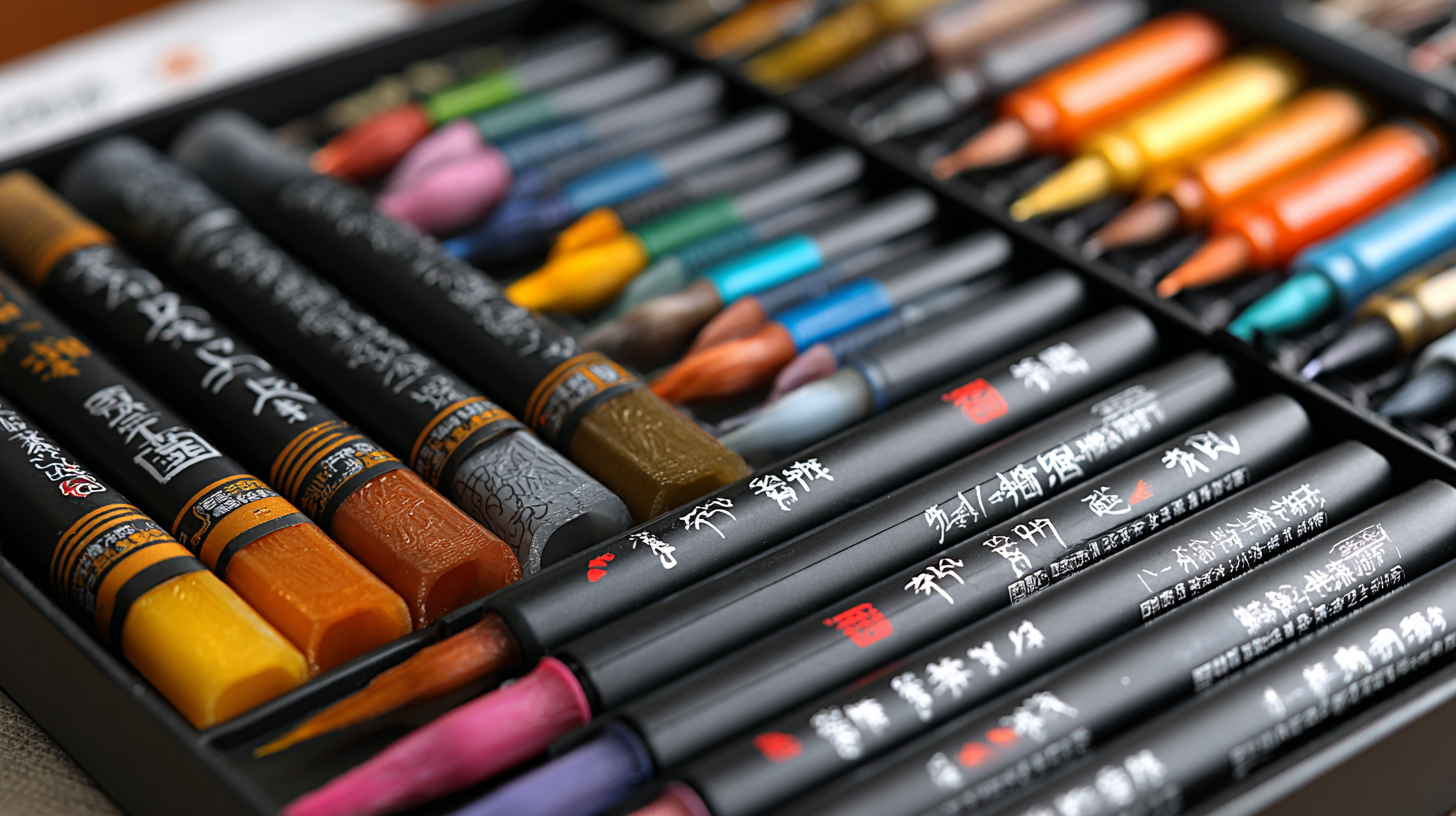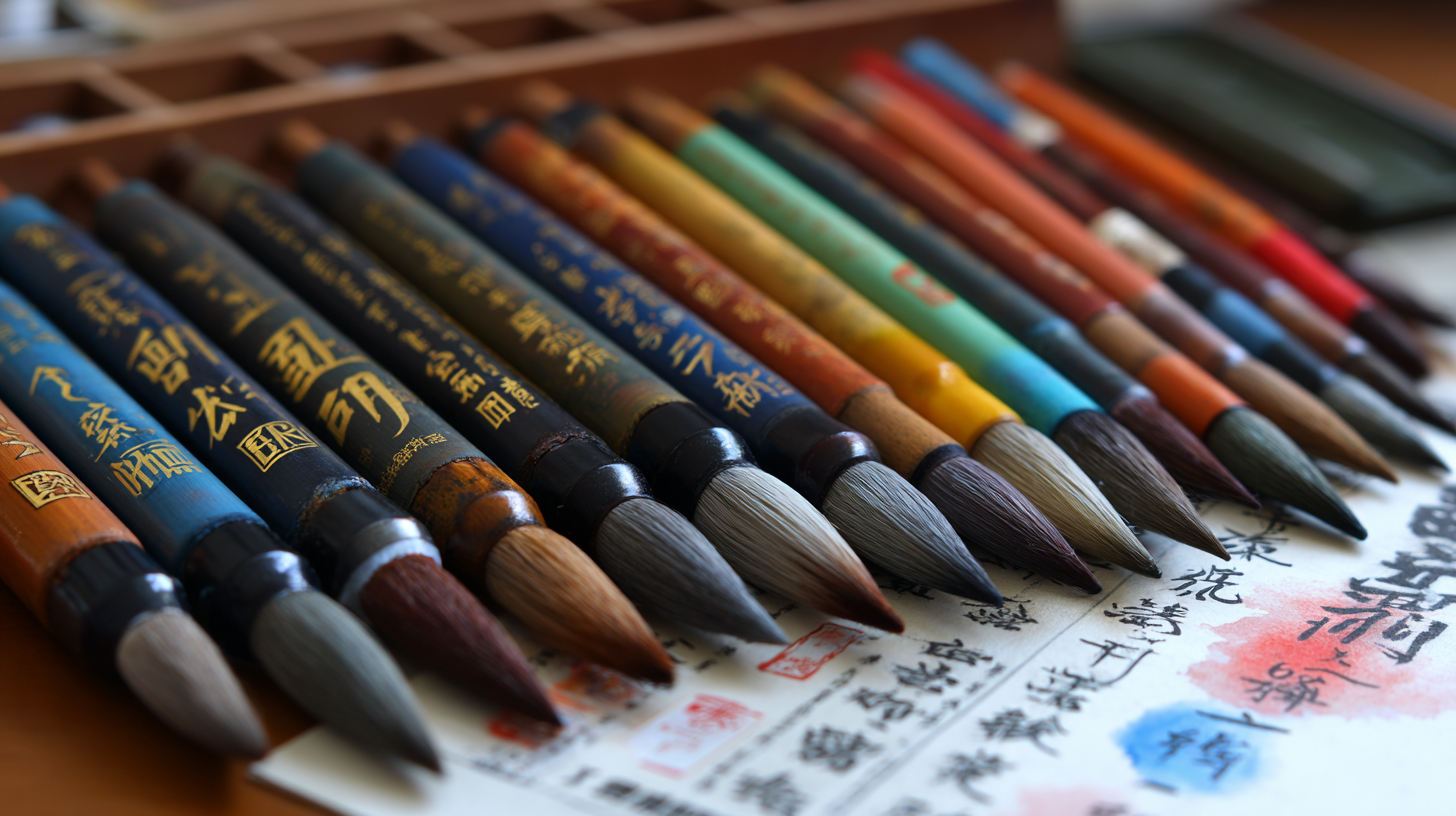In today's global market, the Chinese Brush Pen stands out as an exceptional tool not only for traditional calligraphy but also for a myriad of innovative applications across various industries. Its unique features, such as flexible bristles and the ability to hold large amounts of ink, make it an adaptable instrument for artists, designers, and educators alike. This blog will delve into compelling industry use cases, highlighting how the Chinese Brush Pen is making waves in sectors like art, education, and graphic design. Additionally, we will explore numerical data showcasing its rising popularity and effectiveness, along with insightful reasons why global buyers are increasingly drawn to this versatile writing instrument.

Join us on this exploration of the Chinese Brush Pen and discover how it is transforming creative workflows worldwide.
Chinese brush pens, also known as "maobi," have a rich history that dates back thousands of years, deeply intertwined with the art of calligraphy. Originating in China during the Han Dynasty, these brushes were initially crafted from animal hair and bamboo, reflecting the resources available at the time. The combination of a flexible nib and a sturdy handle allows artists to create a wide range of strokes, making the brush pen a versatile tool for expression. This unique brush design has not only remained a staple in traditional Chinese culture but has also influenced calligraphy practices around the world.
The evolution of the Chinese brush pen parallels the development of Chinese calligraphy, which is considered both an art form and a means of communicating philosophical ideas. Each stroke in calligraphy embodies the artist's emotions, making the brush pen a powerful instrument of expression. The rich variety in brush types, such as goat, wolf, and weasel hair, allows for different textures and effects, enabling artists to convey subtleties in their work. As global interest in Chinese culture rises, understanding the historical significance and craftsmanship of these brush pens becomes essential for both collectors and artists alike, bridging cultural gaps and fostering appreciation for this ancient art form.
| Feature | Description | Applications | Historical Significance |
|---|---|---|---|
| Brush Material | Made from traditional materials like wolf hair, goat hair, and rabbit hair. | Ideal for calligraphy, painting, and traditional Chinese art. | Reflects ancient craftsmanship and cultural heritage. |
| Brush Size | Available in various sizes from small to large for different styles. | Used for fine detail work or bold strokes in artworks. | Size variation caters to diverse artistic expressions in different eras. |
| Handle Design | Often features intricate carvings and designs. | Enhances grip and allows for detailed artistic control. | Symbolizes the aesthetic values of different dynasties. |
| Flexibility | Ability to create varying line thickness and styles. | Versatile for calligraphy strokes and fluid artistic expressions. | Demonstrates the philosophy of harmony in Chinese art. |
| Ink Compatibility | Works well with traditional Chinese ink and color inks. | Perfect for various styles of ink painting and calligraphy. | Ink blending is integral to calligraphic traditions. |
When it comes to selecting the best Chinese brush pen, understanding the key features that set them apart is essential for global buyers. One standout characteristic is the brush tip material. Traditionally made from animal hair, the finest brushes utilize materials such as wolf hair or goat hair, which provide superior flexibility and ink absorption. Some modern brush pens also incorporate synthetic fibers, allowing for durability and consistent performance, even for beginners. This variation in materials caters to different preferences and artistic styles, making it crucial for buyers to consider their specific needs.
Another important feature is the pen's ink flow mechanism. High-quality Chinese brush pens offer a seamless ink supply that facilitates smooth and effortless strokes. Some pens come with refillable cartridges, allowing artists to experiment with various ink types and colors without needing constant replacements. The balance and weight of the pen also play significant roles in comfort and control during use. A well-balanced brush pen empowers artists to create intricate details and dynamic brushwork, making it a vital consideration for anyone serious about their craft.

The resurgence of interest in traditional art forms, particularly painting, has remarkably influenced the revenue streams of leading art and craft materials companies. Recent industry reports indicate that the global market for art supplies is projected to reach significant growth, boosted by the rising popularity of painting among hobbyists and professionals alike. As more individuals seek to express their creativity, the demand for high-quality tools, such as Chinese brush pens, rises correspondingly.
Chinese brush pens, known for their versatility and ability to convey intricate details, are becoming increasingly favored by artists and crafters. Their unique features, like flexible nibs and rich ink flow, lend themselves well to a variety of applications. Studies show that more than 60% of artists are incorporating brush pens into their creative practices, whether for traditional calligraphy, watercolor painting, or modern illustrations. This shift towards traditional artistic techniques is not only elevating consumer interest but also prompting companies to innovate and expand their product lines to meet the evolving needs of the market.
Furthermore, as millennials and Gen Z continuously seek new forms of self-expression through art, the demand for specialized materials grows. Reports estimate that sales in the art supplies segment could witness a compound annual growth rate (CAGR) of over 5% in the coming years. This trend underscores the increasing preference for artisanal and unique creative tools, and as a result, companies that proactively cater to these preferences are likely to see substantial gains in revenue.
When choosing the right brush pen, there are several crucial factors to consider that can significantly enhance your artistic experience. First, the type of bristles is essential. High-quality brush pens often feature flexible bristles that allow for a variety of strokes, from delicate lines to bold, sweeping motions. Consider whether you want synthetic or natural bristles, as each provides distinct textures and finishes that can impact the final artwork.
Another important factor is the ink quality. Opting for water-based inks can provide vibrant colors that blend easily, making them ideal for traditional Chinese painting and calligraphy. Also, think about the pen's usability. A comfortable grip and a well-balanced design can make a huge difference during long drawing sessions, helping to reduce fatigue. Look for designs that fit your hand comfortably, as this will enhance your control and precision while creating intricate details.
Chinese brush pens have gained significant traction among global buyers, especially in contemporary art. According to a recent report by Market Research Future, the global art supplies market is expected to reach $26 billion by 2025, with an increasing demand for traditional tools that offer unique artistic expressions. This trend highlights how artists are not only looking for modern materials but are also embracing the rich history and craftsmanship of Eastern art supplies, particularly Chinese brush pens, which allow for a fluidity and versatility that synthetic pens cannot replicate.

The distinctive features of Chinese brush pens, such as their ability to create varying line widths and textures with just one stroke, have further captivated artists around the world. Research from the International Art Supplies Association indicates that approximately 40% of contemporary artists have incorporated traditional tools into their artwork in the past year. This shift underscores a growing appreciation for the nuanced techniques traditional brush pens offer, with artists finding that these tools enhance their creative process by providing a deeper connection to the historical and cultural significance of their craft.
